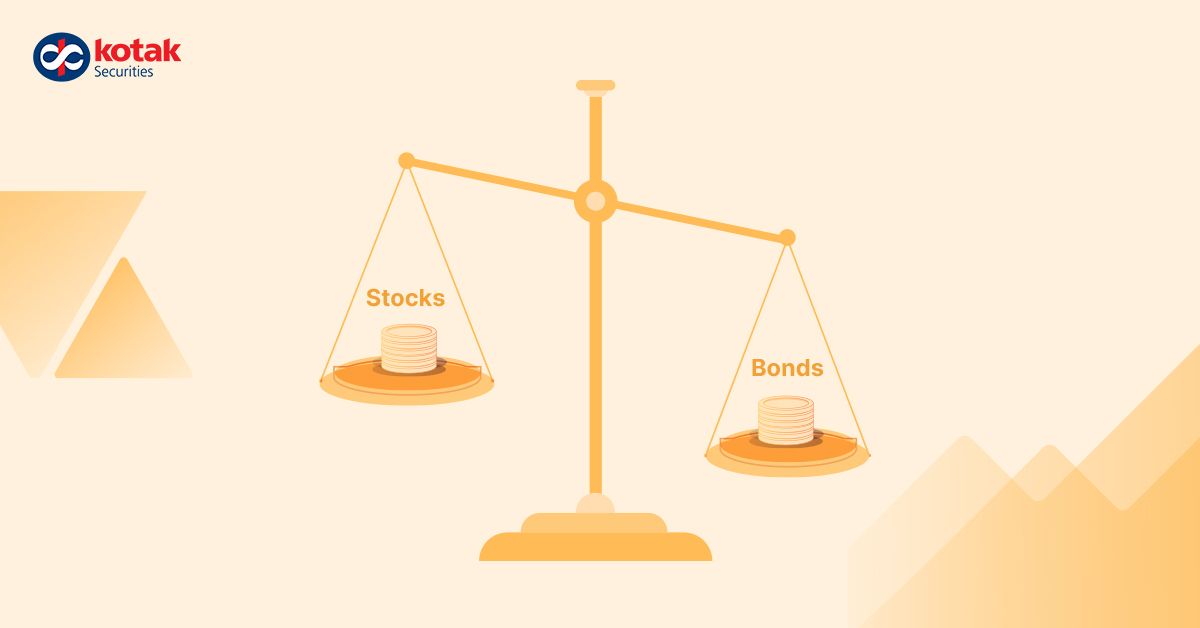Tips for Rebalancing Your Mutual Fund Portfolio
Meaning of Rebalancing Mutual Fund Portfolio
Let’s understand the rebalancing aspect with the help of an example. Suppose you initiated your investment journey with a 70:30 equity-debt allocation. However, due to a couple of prosperous years in the equity market, your allocation has surged to 90:10. To put it simply, the 70% you initially allocated to equities has appreciated, courtesy of market growth, resulting in equities now constituting 90% of your portfolio.
Rebalancing involves actively reviewing and restoring the originally selected target asset allocation. In this scenario, equity has expanded to represent 90% of your portfolio. Consequently, you may want to return it to the initial 70%. This entails selling off 20% of the equity portion and reallocating that amount into debt.
How to Rebalance?
Here are some ways through which you can rebalance your portfolio.
1. Regular Reviews
Regularly review your investment portfolio. Aim for at least an annual assessment, and consider more frequent checks if there are significant market movements or life events. Life changes, such as a new job, marriage, or the birth of a child, can act as triggers for reassessing your financial goals and adjusting your investment strategy accordingly.
2. Define Tolerance Bands
Establish tolerance bands for each asset class in your portfolio. Tolerance bands represent the acceptable range of deviation from your target allocation. For instance, if your target equity allocation is 60%, with a 5% tolerance band, you'd rebalance when equity exceeds 65% or falls below 55%.
3. Opt for a Strategic Approach
Instead of executing a full rebalance at once, consider a strategic and gradual approach. This involves spreading adjustments over time to minimize the impact of market volatility. Seize opportunities to rebalance during market fluctuations. For instance, if a particular asset class experiences a significant dip, it might be an opportune moment to buy low and rebalance.
4. Evaluate Asset Performance
Assess the performance of each asset class within your portfolio. Identify those that have outperformed and contributed to the deviation from your target allocation. When rebalancing, sell a portion of the assets that have performed well and contributed to the overallocation. Use the proceeds to buy more of the underperforming assets.
Benefits of Rebalancing
Rebalancing your mutual fund portfolio brings several benefits to the table. Some of them are:
- Risk Control
Active rebalancing helps maintain the risk level within your comfort zone. By periodically adjusting your portfolio, you prevent it from becoming overly exposed to the fluctuations of a single asset class, reducing the potential for significant losses during market downturns.
- Maintain Your Life Goals
Rebalancing allows you to align your investments with your evolving goals. Whether you're saving for a new home, your child's education, or retirement, adjusting your portfolio ensures it remains in sync with your changing needs.
- Optimize Returns
Regularly rebalancing your portfolio allows you to optimize returns by capturing gains from high-performing assets and reinvesting them in areas with potential for future growth. This systematic approach enhances the overall performance of your portfolio over the long term.
- Adapt to Market Conditions
Financial markets are inherently unpredictable, and economic conditions can change. Rebalancing ensures that your investment strategy adapts to these changes. By staying vigilant and adjusting your asset allocation, you position yourself to navigate various market environments effectively.
- Instills Behavioral Discipline
Rebalancing instills a sense of discipline in your investment approach. It helps you avoid emotional decision-making based on short-term market fluctuations. Instead, you make informed, strategic decisions guided by your long-term financial objectives.
- Buy Low, Sell High
Rebalancing encourages a disciplined approach to buying low and selling high. When certain assets outperform, the process involves selling a portion of those high-performing assets (selling high) and reinvesting the proceeds into underperforming assets (buying low). This strategic approach positions your portfolio to benefit from market shifts.
In Conclusion
Rebalancing your mutual fund portfolio might sound complex, but it's crucial to keep your investments on track. By staying disciplined, reviewing regularly, and making adjustments when needed, you can ensure that your portfolio aligns with your financial goals and risk tolerance. Remember, it's all about maintaining balance and staying on the path to financial success. Happy investing!
FAQs
When Should I Rebalance My Mutual Fund Portfolio?
You should rebalance it at least once a year or when your target asset allocation has changed significantly. Also, if there’s a significant life event that requires you to adjust your goals, you should rebalance.
What are the Factors to Keep in Mind While Rebalancing?
Remembering factors include market performance, risk tolerance, tax implications, and time horizon.
How Often Should Rebalancing be Done?
Rebalancing your portfolio at least once a year is optimal.






